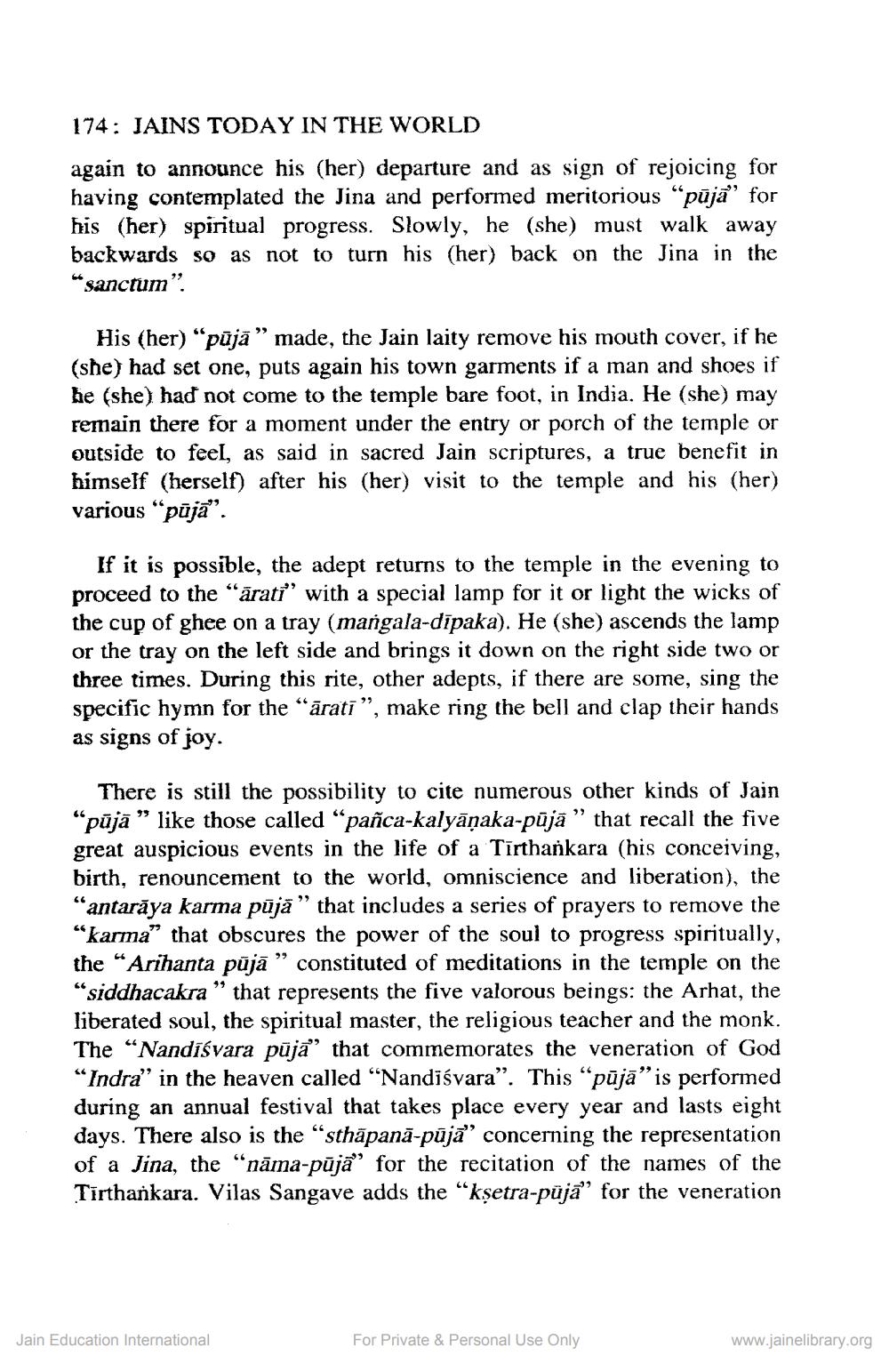________________
174: JAINS TODAY IN THE WORLD
again to announce his (her) departure and as sign of rejoicing for having contemplated the Jina and performed meritorious "pūjā" for his (her) spiritual progress. Slowly, he (she) must walk away backwards so as not to turn his (her) back on the Jina in the "sanctum".
His (her) “pūjā" made, the Jain laity remove his mouth cover, if he (she) had set one, puts again his town garments if a man and shoes if he (she) had not come to the temple bare foot, in India. He (she) may remain there for a moment under the entry or porch of the temple or outside to feel, as said in sacred Jain scriptures, a true benefit in himself (herself) after his (her) visit to the temple and his (her) various "pūjā".
If it is possible, the adept returns to the temple in the evening to proceed to the "arati" with a special lamp for it or light the wicks of the cup of ghee on a tray (mangala-dīpaka). He (she) ascends the lamp or the tray on the left side and brings it down on the right side two or three times. During this rite, other adepts, if there are some, sing the specific hymn for the "arati", make ring the bell and clap their hands as signs of joy.
There is still the possibility to cite numerous other kinds of Jain “pūjā" like those called “pañca-kalyāṇaka-pūjā” that recall the five great auspicious events in the life of a Tirthankara (his conceiving, birth, renouncement to the world, omniscience and liberation), the "antaraya karma pūjā” that includes a series of prayers to remove the "karma" that obscures the power of the soul to progress spiritually, the "Arihanta pūjā" constituted of meditations in the temple on the "siddhacakra" that represents the five valorous beings: the Arhat, the liberated soul, the spiritual master, the religious teacher and the monk. The "Nandisvara pūjā" that commemorates the veneration of God "Indra" in the heaven called "Nandiśvara". This "pūjā" is performed during an annual festival that takes place every year and lasts eight days. There also is the "sthāpanā-pūjā” concerning the representation of a Jina, the "nāma-pūjā” for the recitation of the names of the Tirthankara. Vilas Sangave adds the "kṣetra-puja" for the veneration
Jain Education International
For Private & Personal Use Only
www.jainelibrary.org




